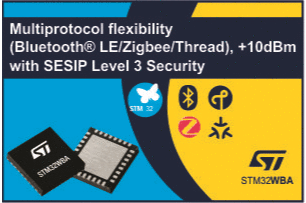 LED technology has in the market of horticulture a high growth rate of up to 50 % for the last year: This is because it is the most energy efficient lighting technology and leads to much less heating, which is beneficial for the plants and the greenhouse regulation.
LED technology has in the market of horticulture a high growth rate of up to 50 % for the last year: This is because it is the most energy efficient lighting technology and leads to much less heating, which is beneficial for the plants and the greenhouse regulation.
Plants use light first of all to grow. Light is their principal energy source and helps to convert CO2 and water to their carbonic building blocks which the plant is made of. Thus, horticulture lighting provides more “fuel” to a plant’s growth. But not all the light can be used by plants. Basically only blue and orange/red light get absorbed (this is by the way the reason that plants are green: Green from the sunlight is reflected, whereas red, orange and blue are absorbed by the plant). LED horticultural lighting uses mainly the light colors with the highest conversion rate of light into plant growth. Empirically a proportion of 20 % blue to 80 % red is common.

Moreover, light triggers diverse processes and growth phases in plants. Plants use the light and its spectral composition to synchronize their inner clock. The seasons of the year have different day length. Thus extending the daylight artificially using LEDs may help to make plants bloom early in the year. However at the booth of the research project ViSuELL we have learned that for the studied plants it works only if the right light color is dominant. In the presented case prolonging the daylight by 4 hours had no effect but prolonging it by 4 hours with additional far red (about 730 nm) provided the intended effect and the plants started blooming.
So how can smart horticultural lighting replace the use of chemicals? Greenhouse growth often suffers from excessive bulky growth with weak branches (elongated growth). This may be avoided by the use of dark red light (around 660 nm) as presented in the project ViSuELL at the fair. However, up to now chemicals are often used to inhibit this excessive growth. This is one example how to avoid chemicals. In contrast it was also presented in a cross check that far red light (around 730 nm) fosters this often-unintended bulky and weak growth mode. Researchers are investigating related topics. However, we understood that there is no general rule.
Plants are growing under very different conditions in various climatic zones at various locations like on the seaside or in the mountains. Therefore, they have adapted to these locations and also to the differences in illumination. In these circumstances the right triggers for the different growth modes and phases can be found. Artificial greenhouse cultivation hardly can set these trigger conditions. To compensate for this chemicals are used. However simulating the right environmental conditions e.g. by smart lighting settings can help the plants to evolve more naturally without chemistry.
If the right understanding for the plant cultivation is available smart horticultural lighting may become a future trend where light spectra and time patterns are adapted and by sensing the environmental conditions are regulated in dependence e.g. from the available daylight. Moreover one could imagine, that differences between greenhouse and open land horticulture could be overcome. In greenhouses the plants may have the optimum growth conditions, but some environmental stress e.g. from cloudy weather may be needed to build certain flavors, aromas and phytochemical.
To conclude, the market of horticultural LED lighting is growing rapidly especially driven by its energy efficiency. Moreover, the adaption of light spectra and the illumination patterns have significant influence on plant growth. It helps to trigger intentionally growth modes. This may help to avoid chemicals currently used in horticulture. Furthermore, horticultural LED lighting may become essential for artificial vertical farming. Therefore, a new tendency to intelligent, smart horticulture lighting may develop. This is an interesting market for smart regulation technology which is offered by EBV Elektronik together with all the special LEDs and LED driver electronics.








